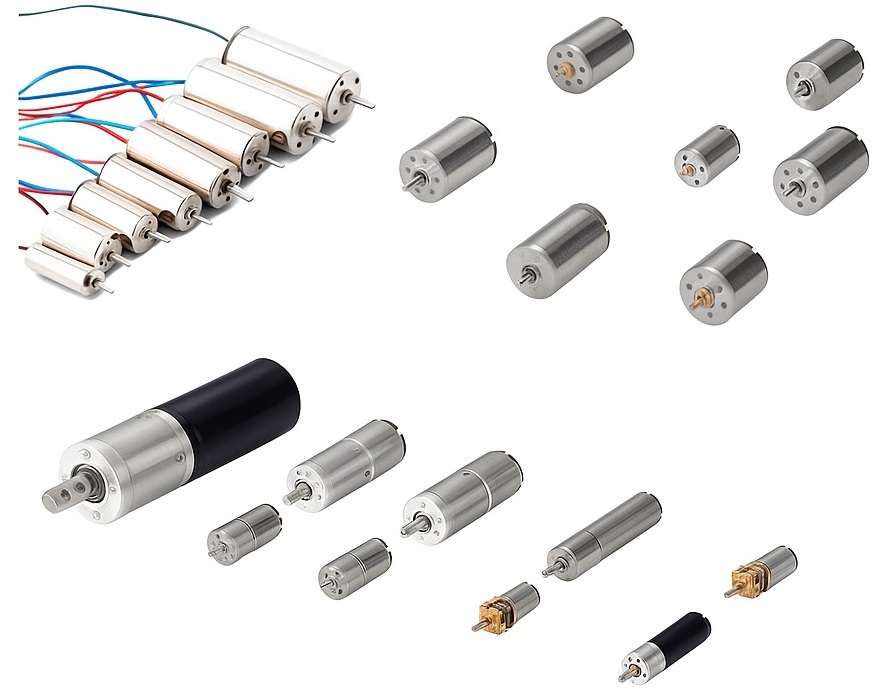Categories
Locations
Shanghai,China - Global HQ

WH/DG,China - Mfg&Sales

Frankfurt am Main,Germany

How Much Does an Electric Drive Axle Cost in 2024?
With the growing shift towards electric vehicles (EVs), the electric drive axle has become a critical component in modern automotive engineering. An electric drive axle integrates the motor, transmission, and power electronics into a single unit, contributing to the efficiency and performance of EVs. As of 2024, the cost of an electric drive axle varies widely, depending on several factors. This article explores the price range and the elements that influence the cost of electric drive axles.

Average Cost of an Electric Drive Axle
A. Price Range
As of 2024, the average cost of an electric drive axle ranges from $400 to $1,500. This price includes the integrated motor, transmission, and power electronics. The variation in cost is influenced by several factors, including the specifications, performance capabilities, and additional features of the axle.
B. Factors Influencing Cost
Power and Performance: Higher power and performance specifications, such as greater torque and speed capabilities, typically increase the cost. Electric axles designed for high-performance vehicles or heavy-duty applications will be on the higher end of the price spectrum.
C. Technology and Integration
Advanced technologies, such as regenerative braking systems and sophisticated control algorithms, EM brake can add to the cost. Additionally, the level of integration with other vehicle systems can affect the price.
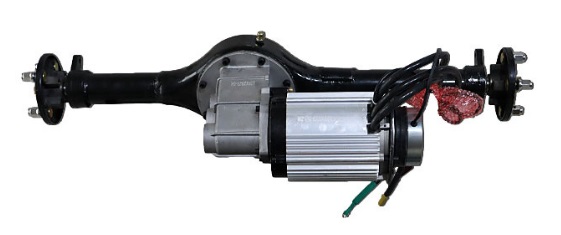
D. Brand and Manufacturer
Well-known brands and manufacturers with a reputation for quality and reliability may charge a premium for their products. Conversely, lesser-known or new manufacturers might offer lower prices to gain market share. Uniqualis can customize the professional electrical drive axle with the cost-performance balanced price for you by more than 10 years experience.
E. Volume and Customization
Bulk purchases and standard models are generally cheaper. Custom-designed axles tailored to specific vehicle requirements or low-volume production runs can significantly increase the cost.
Detailed Cost Breakdown
A. Standard Electric Drive Axles
For typical light weight EVs, a standard electric drive axle with moderate power output and basic integration features usually costs between $400 and $800. These axles are suitable for everyday driving conditions and are often found in economy ,500w-4kW and mid-range off-road electric cars.
B. High-Performance Electric Drive Axles
Electric drive axles designed for high-performance EVs, such as sports cars or high-capacity trucks, can cost between $1,000 and $1,500. These axles offer higher torque, better speed control, and advanced features like enhanced cooling systems and robust construction to handle demanding driving conditions.

C. Specialized and Custom Electric Drive Axles
In cases where specialized or custom electric drive axles are required, the cost can exceed $1,500. These axles may be designed for unique applications, such as off-road vehicles, heavy-duty commercial trucks, or specific industrial uses. The customization process involves additional engineering, design, and testing, contributing to the higher price.
Long-Term Value and Investment
A. Efficiency and Performance Benefits
Investing in a quality electric drive axle can provide long-term benefits, including improved vehicle efficiency, enhanced performance, and reduced maintenance costs. High-quality axles contribute to better energy use, leading to longer battery life and extended driving range.
B. Reliability and Durability
Electric drive axles from reputable manufacturers are built to last, offering durability and reliability that justify the initial investment. A durable axle reduces the likelihood of frequent replacements and repairs, ultimately saving money over the vehicle's lifespan.
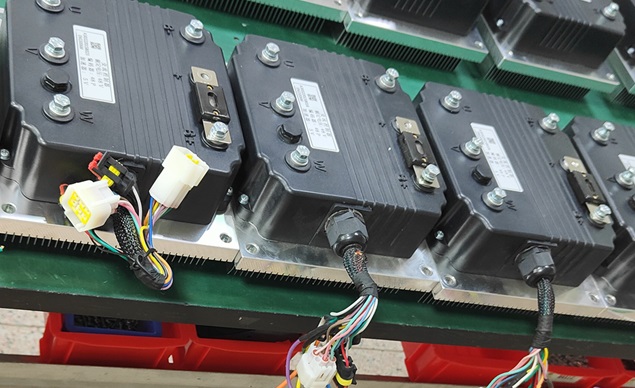
C. Environmental Impact
Electric drive axles play a crucial role in the overall efficiency of EVs, contributing to lower emissions and a reduced carbon footprint. Investing in efficient and high-performance axles aligns with the broader goal of sustainability and environmental responsibility.
Conclusion
The cost of an electric drive axle in 2024 ranges from $400 to $1,500, influenced by factors such as power and performance, technology integration, brand reputation, and customization needs.

While the initial investment may vary, the long-term benefits of efficiency, performance, reliability, and environmental impact make electric drive axles a worthwhile consideration for modern electric vehicles.
Are you looking for a trusted partner for the supply of Electric Drive axle?
How do you compare the torque of a mid-drive and hub motor?
When it comes to electric bicycles, choosing the right motor is crucial for performance. Van Raam, a company specializing in e-bikes, primarily uses hub motors. However, mid-drive motors are also prevalent in the cycling world. This article will explain how to compare the torque of these two types of motors, providing insights with an example comparison between the torque of the Easy Rider tricycle with a hub motor and two types of mid-drive motors.
What is Motor Torque?
Torque, measured in Newton meters (Nm), is a force that causes rotation. In the context of e-bike motors, torque determines how much power the motor can deliver to move the bike. For example, a motor with 100 Nm torque and a 1-meter stick can lift a 10 kg weight at the stick's tip.
Hub Motors vs. Mid-Drive Motors
A. Hub Motors
Hub motors, like those used by Van Raam, are built into the wheel. They have a reputation for longevity and reliability. The torque of a hub motor is measured at the motor shaft, which directly drives the wheel.

B. Mid-Drive Motors
Mid-drive motors are located at the bike's crankshaft and transmit power to the rear wheel via the chain. The torque of a mid-drive motor is measured at the crankshaft, making direct comparison with hub motors complex without adjustments for gear ratios.
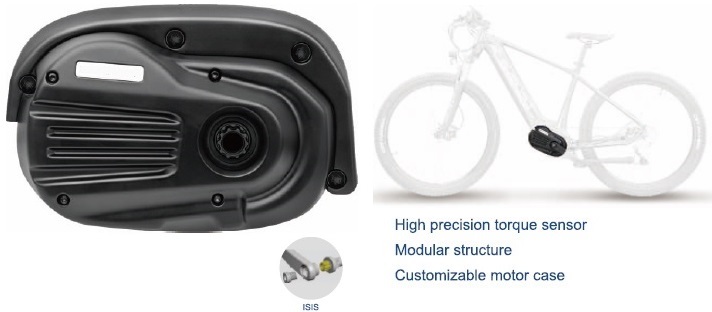
How to Compare Motor Torque
To accurately compare the torque of hub motors and mid-drive motors, you need to convert the motor torque to the torque at the driven wheel, considering gear ratios.
A. For Hub Motors
1. Direct Drive: The torque at the wheel is equal to the motor's torque.
2. Chain Drive: Adjust the motor's torque by the gear ratio between the motor's sprocket and the wheel's sprocket.
B. For Mid-Drive Motors
1. Consider the gear ratio between the crankshaft and the rear wheel.
2. Account for the impact of the bike's gear hub and shifting, which can reduce the effective torque.
Easy Rider Tricycle Comparison
The following comparison uses torque graphs to illustrate differences between the Easy Rider tricycle's hub motor and two mid-drive motors.
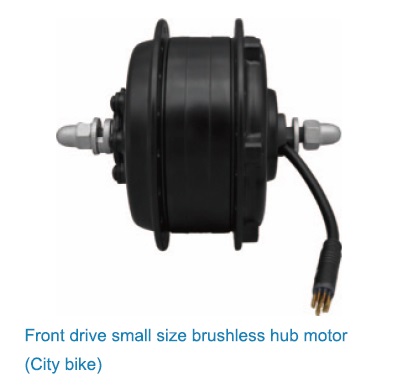
A. Mid-Drive Motor with 85 Nm Torque:
1. Delivers strong initial torque.
2. As speed increases, torque decreases significantly, falling below the hub motor's torque.
This reduction is due to gear shifting at a pedal speed of 40 RPM, common among Uniqualis's users.
B. Mid-Drive Motor with 48 Nm Torque:
1. Initially stronger than a hub motor across the torque range but only briefly.
2. Provides more power up to 5 km/h but less than the Easy Rider’s hub motor beyond that speed.
C. Hub Motor on Easy Rider:
1. Consistently delivers strong torque, especially at speeds above 6 km/h.
2. Offers a more stable and reliable performance without the significant drop-offs seen in mid-drive motors.
Conclusion
When comparing the torque of mid-drive and hub motors, it's essential to consider the torque at the driven wheel and the gear ratios involved.

Hub motors, like those in Uniqualis's Easy Rider tricycles, often provide more stable and consistent torque at higher speeds compared to mid-drive motors, which show stronger initial torque but decrease significantly as speed increases. Thus, for sustained performance, particularly at higher speeds, hub motors can offer superior torque and reliability.
Are you looking for a trusted partner for the supply of Hub Motor?
What is a Gear Motor and how it works?
Posted May 20,2024
A gear motor is a sophisticated mechanical device that combines an electric motor with a gearbox. This integration is designed to reduce the motor's speed (RPM) while increasing its torque, making it a versatile and efficient solution for various applications. Unlike a standard DC motor, which typically operates at high speeds with low torque, a gear motor provides the necessary power and control for specific tasks that require lower speeds and higher torque.
Understanding the Gear Motor
A. Definition and Function
A gear motor consists of an electric motor and a gearbox containing a series of gears. The primary function of the gearbox is to reduce the speed of the motor while simultaneously increasing its torque. This allows the gear motor to perform tasks at a controlled speed with enhanced power, making it ideal for applications that demand precision and strength.
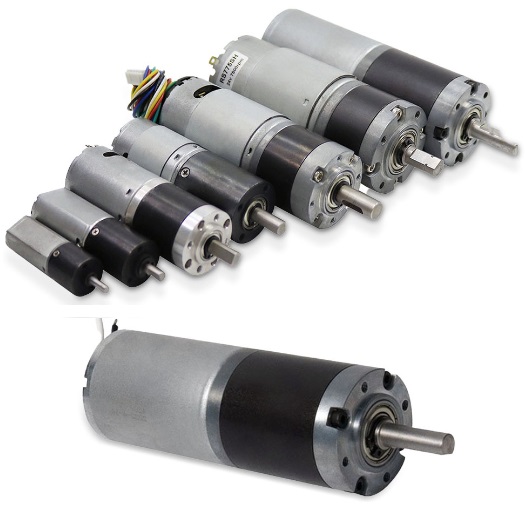
B. Types of Gear Motors
1. Brushed Gear Motors:
These motors use brushes to transfer electricity to the motor windings, typically offering simple construction and ease of control.
2. Brushless Gear Motors:
These motors eliminate brushes, reducing maintenance and increasing efficiency and lifespan.
3. Stepper Gear Motors:
These motors move in discrete steps, providing precise control over motion and positioning.
Historical Background
The concept of the gear motor dates back to 1928, when German designer and entrepreneur Albert Obermoser invented the Vorlegemotor, or gear motor. Since then, the basic model has undergone significant improvements, leading to the development of various advanced models tailored for different applications.
Are you looking for a trusted partner for the supply of Gear Motors?
How Gear Motors Work
The performance of a gear motor is influenced by the number and type of gears within the gearbox. Different combinations of gears yield varying output speeds and torque levels. Generally, fewer gears result in higher RPM and lower torque, while more gears provide lower RPM and higher torque. This adaptability allows gear motors to be mounted in various positions and used in diverse applications.
A. Reduction Ratio
The reduction ratio, a critical characteristic of a gearbox, is the ratio between the input speed (from the motor) and the output speed (from the gearbox). This ratio determines the speed reduction and torque multiplication, making it a vital factor in the gear motor's performance.
B. Power and Load Capacity
The power and load capacity of a gear motor are defined by the maximum torque it can transmit, measured in Newton meters (Nm). This measurement indicates the motor's ability to handle different load levels and operational demands.
Differences Between Gear Motors and DC Motors
The primary difference between a gear motor and a standard DC motor lies in their speed and torque characteristics. While DC motors operate at high RPM with low torque, gear motors reduce the RPM and increase the torque through the integrated gearbox. This makes gear motors more versatile and suitable for a broader range of applications that require controlled speed and enhanced power.
Advantages of Gear Motors
A. Torque Multiplication:
Gear motors significantly increase the torque of the motor, allowing high torque output even in compact spaces.
B. Speed Reduction:
They effectively reduce the motor's speed, offering various reduction ratios to suit different applications.
C. Versatility:
The availability of multiple combinations of gearboxes and motors at different voltages provides flexibility in application.
D. Ease of Use:
An integrated motor and gearbox solution simplifies machinery development and eliminates the need for alignment work.
E. Ready-to-Use:
Gear motors are all-in-one solutions, ready for immediate use without additional setup.
Conclusion
A gear motor is a powerful and adaptable component that enhances the functionality and efficiency of various mechanical systems. Its ability to provide high torque at controlled speeds makes it indispensable in industries ranging from automation to consumer appliances.
With ongoing advancements, gear motors continue to play a critical role in the evolution of mechanical and electronic systems, providing reliable and efficient solutions for a wide array of applications.
Are you looking for a trusted partner for the supply of Gear Motors?
A. Torque Multiplication:
Gear motors significantly increase the torque of the motor, allowing high torque output even in compact spaces.
B. Speed Reduction:
They effectively reduce the motor's speed, offering various reduction ratios to suit different applications.
C. Versatility:
The availability of multiple combinations of gearboxes and motors at different voltages provides flexibility in application.
D. Ease of Use:
An integrated motor and gearbox solution simplifies machinery development and eliminates the need for alignment work.
E. Ready-to-Use:
Gear motors are all-in-one solutions, ready for immediate use without additional setup.
Conclusion
A gear motor is a powerful and adaptable component that enhances the functionality and efficiency of various mechanical systems. Its ability to provide high torque at controlled speeds makes it indispensable in industries ranging from automation to consumer appliances.
With ongoing advancements, gear motors continue to play a critical role in the evolution of mechanical and electronic systems, providing reliable and efficient solutions for a wide array of applications.
Are you looking for a trusted partner for the supply of Gear Motors?
Top 10 gear motor manufacturers in 2024
Posted May 28,2024
Are you looking for a reliable gear motor manufacturer? Do you find it challenging to obtain comprehensive information about different companies in the market? Your search ends here.
We have completed an extensive survey and compiled the top 10 gear motor manufacturers in 2024, saving you the time and hassle of scouring the internet. This article provides detailed insights into each company, helping you make an informed decision.
| Position | Company Name | Year Established | Location |
|---|---|---|---|
| 1 | Faulhaber |
1947 | Germany |
| 2 | Portescap
|
1931 | Switzerland |
| 3 | Uniqualis |
2001 | China |
| 4 | Dunkermotoren |
1950 | Germany |
| 5 | Maxon |
1961 | Switzerland |
| 6 | Sha Yang Ye Industrial |
1980 | Taiwan, China |
| 7 | Bauer |
1927 | Germany |
| 8 | Nidec Corporation |
1973 | Japan |
| 9 | ISL |
1975 | USA |
| 10 | Transmotec |
1995 | Sweden |
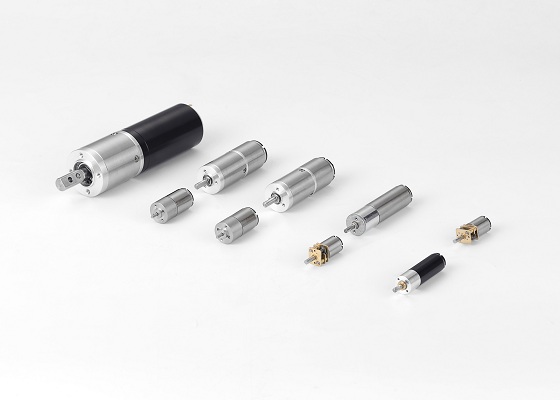
We have discussed the top 10 gear motor manufacturers in 2024. All these companies provide high quality gear motors. All have a different design, technology, benefits, etc. But the most important thing is their support and reliability. They make gear motors according to safety standards.
If you have Gear Motors needs, you can contact us, we will provide you with help and give you the best solution.
What are the application of DC drive system?
Posted May 18,2024
DC motors and drive systems have long been a mainstay in various industrial applications due to their robust performance, simplicity, and efficiency. Their ability to provide adjustable speed, constant or low-speed torque, and reliable operation makes them ideal for a wide range of uses. This article delves into the applications of DC drive systems, showcasing their versatility and importance in modern industries.
1. Industrial Machinery

A. Conveyors
DC drive systems are extensively used in conveyor belts due to their precise speed control and ability to handle varying loads. This is crucial in manufacturing and material handling processes, where different speeds are needed for different stages of production or material transfer. The adjustable speed feature of DC drives ensures smooth operation and efficiency.
B. Turntables
Turntables in industrial settings often require precise speed adjustments and stable low-speed operation. DC drives are well-suited for this application, providing the necessary control for tasks such as assembly lines, inspection stations, and packaging processes.
C. Dynamic Braking and Reversing
Many industrial machines require dynamic braking and reversing capabilities. DC drives excel in these applications, offering rapid response and reliable performance. This is particularly useful in applications such as metalworking machinery, where quick changes in direction and braking are necessary.
2. Transportation
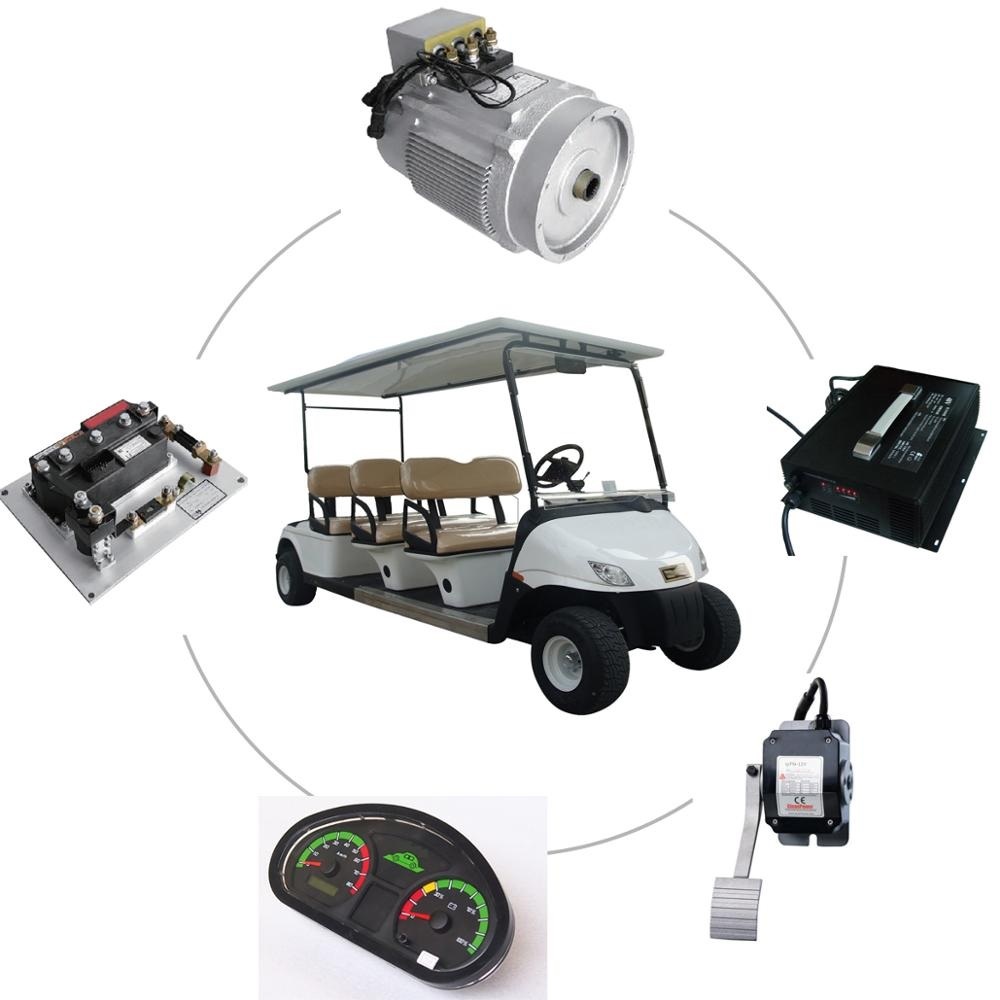
A. Electric Vehicles (EVs)
DC drives are fundamental in the operation of electric vehicles, including cars, trains, and trams. They provide the necessary torque and speed control, ensuring smooth acceleration and deceleration. The high starting torque of DC drives makes them ideal for transportation applications, contributing to energy efficiency and performance.
B. Elevators and Escalators
Elevators and escalators depend on DC drive systems for their smooth and safe operation. The precise speed control and ability to handle varying loads ensure reliable performance, enhancing passenger safety and comfort.
3. Renewable Energy
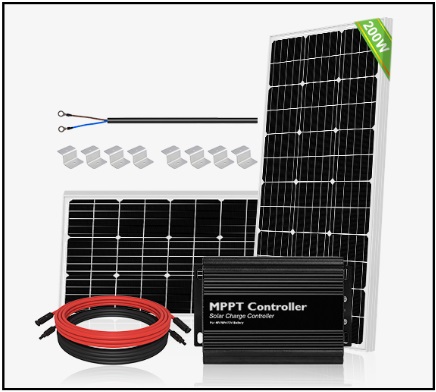
A. Solar Tracking Systems
DC drives are used in solar power systems to control the positioning of solar panels, maximizing the capture of sunlight. By adjusting the angle of the panels throughout the day, DC drives help optimize the efficiency of solar energy generation.
B. Wind Turbines
In wind power applications, DC drives are utilized to control the positioning and speed of turbine blades. This ensures maximum energy capture from the wind, contributing to more efficient power generation.
4. Robotics and Automation

A. Robotics
Robotics applications require precise motion control, which DC drives provide efficiently. From robotic arms to automated conveyor systems, DC drives enable high precision and repeatability, essential for modern manufacturing processes.
B. Automated Guided Vehicles (AGVs)
AGVs in warehouses and manufacturing facilities use DC drive systems for propulsion and steering. The accurate speed and direction control offered by DC drives ensure efficient and precise movement of materials.
5. Electric Propulsion
A. Marine Applications
Marine vessels, including ships and submarines, use DC drives for propulsion systems. The ability to provide smooth and variable speed control makes DC drives ideal for marine applications, ensuring efficient and reliable operation in different conditions.
B. Aerospace Applications
In the aerospace sector, DC drives are employed in control systems for actuators, managing the position of flaps and other movable components. Their reliability and precision are critical for the safe and efficient operation of aircraft.
6. Mining and Drilling
A. Excavation Equipment
DC drives are essential in excavation equipment, offering the torque and speed control needed for drills, excavators, and conveyors. Their robust performance ensures efficient operation in the challenging conditions of mining environments.
B. Conveyor Belts
In mining and bulk material handling, DC motor-driven conveyor belts provide reliable and controllable transportation of materials. The ability to adjust speeds and handle heavy loads makes DC drives suitable for these demanding applications.
Conclusion
DC drive systems are integral to a wide array of industrial applications due to their versatility, reliability, and precise control capabilities. From manufacturing and transportation to renewable energy and robotics, DC drives play a crucial role in enhancing efficiency and performance. Their continued evolution and adaptation to modern technology ensure that DC drive systems will remain vital in future industrial advancements.
Understanding and utilizing the unique benefits of DC drive systems can help industries optimize processes, increase productivity, and achieve sustainable development goals.
Are you looking for a trusted partner for the supply of Gear Motors?
Customer Service
Germany Phone:
+49-(0)160 5843578
China Phone:
+86 159 2187 7296
Email : uniqualis@gmail.com
John@uniqualis.com
WhatsApp:
+86 159 2187 7296
Skype : Uniqualis
Electric Drive Axle
Wheel Drives


